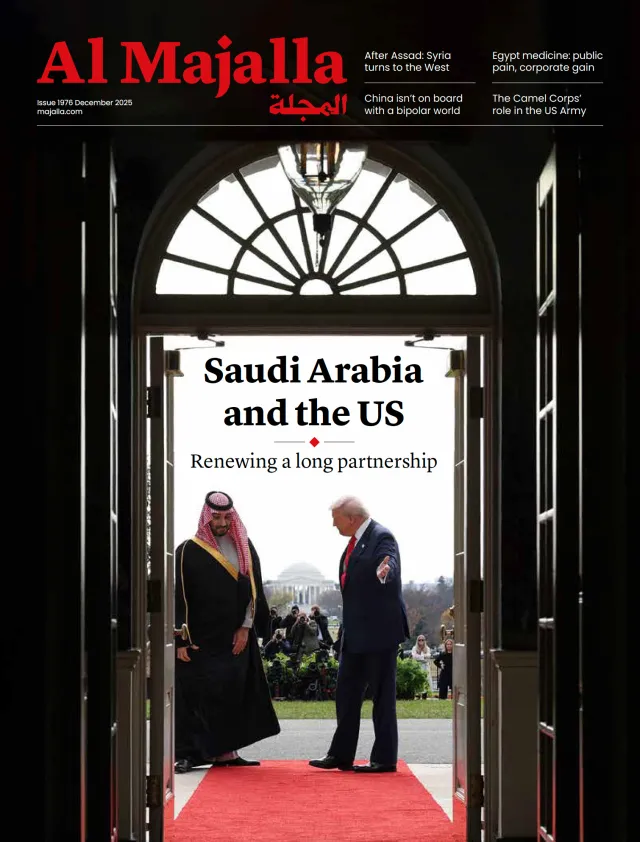After US President Donald Trump imposed 145% tariffs on all imports from China, Beijing retaliated with its own tariff increase and also banned the export of seven critical rare earth elements to the US, demonstrating how REEs have become a potent weapon in the escalating trade war between the two countries.
The move puts a crucial part of the supply chain for a range of advanced US industries under threat. As concern about the implications of the export ban rises, it has also revealed the extent to which the US depends on China for REEs.
Beijing controls between 70% and 90% of the production of raw REEs and around 90% of their global refining capacity. That means even when REEs are extracted in other countries, China partly oversees their production.
Between 2020 and 2023, the United States relied on China for 70-80% of the rare earth imports at the centre of China’s latest restrictions, which were applied in April. For one of them, yttrium—used in fuel cells, magnets, alloys, and superconductors—dependency reached 93%
Meanwhile, US efforts to diversify sources and boost local production face multiple challenges, including the environmental impact, significantly refining costs, while global prices fall by 20% due to increased Chinese supply, undermining the profitability of domestic investments.
Al Majalla examines REEs, their uses, and the implications for the world of their place in the crossfire of the tariff battle. This is not just the story of an economic dispute; it is a reflection of a geopolitical confrontation reshaping global power balances.
As the US seeks to maintain its industrial and technological supremacy in a rapidly changing world, China’s mining industry has given it extraordinary leverage over its rival. Trump’s trade war reveals the dangers of strategic dependence on an increasingly bold and influential adversary, in a confrontation that is speeding ever closer to the edge.

Not so rare, but difficult to extract
REEs are a group of 17 chemical elements (listed at the end of his article). Despite the name, they are abundant. However, extracting them is expensive and complex due to the nature of their global dispersion and the way they are mixed with other metal deposits.
The sheer breadth of the applications for which they are essential shows how significant they have become in a range of modern industries, from semiconductor production to cutting-edge medicine.
Gadolinium is used in hospital scanning equipment, nuclear energy and visual display equipment. Cerium is used for refining oil and in superconductors, while dysprosium features in wind turbines and nuclear reactors. US industries depend upon them to a significant degree.
The industry most hungry for REEs is electronics. It uses up about 70% of them in producing smartphones, chips, semiconductors, and fibre optics.
They are also vital to another area essential to the US national interest: defence. Around 427 kilogrammes of REEs are used in every F-35 fighter jet. There are 4.2 tonnes of REEs in each Virginia-class nuclear submarine. They also go into Columbia-class submarines, Tomahawk missiles, and Predator drones.
This shows just how much Beijing’s rare earth export restrictions pose a direct threat not only to key US industries but also to those underpinning its national security. For example, China controls 56% of the global supply of antimony—a metal particularly important to defence.
Fast-growing industries likely to help define the next phase of global industrial development add to the dependence on REEs. The production of electric vehicles depends on neodymium and dysprosium. Demand is expected to rise by 40% by 2030. And every wind turbine requires 200kg of REEs, which are also used in solar panels.

The exporter strikes back
China’s April restrictions on imports to the US were imposed on seven REEs: samarium, gadolinium, terbium, dysprosium, lutetium, scandium, and yttrium. The controls require strict export licences, giving China full control over supply. In December 2024, China restricted the export of gallium, germanium, and antimony, used in semiconductors, defence, arms production, and ammunition.
Production of electric vehicles (EVs) could grind to a halt in the US as a result. Carmakers typically hold only two to three months of stock, although there may be enough to last six months in some cases. Magnets are an important part of EV production, and shortages could also kick in within 3 months to six months.
Tesla and other companies rated the severity of the restrictions at between 7 and 8 out of 10, with one official warning of “serious consequences.” Shortages of samarium and gadolinium also threaten the production of fighter jets, submarines, and missiles, raising national security concerns.
The halt of gallium and germanium supplies threatens tech industries and chip production and is expected to raise electronics manufacturing costs by between 20% and 30%. In renewable energy, dependence on China for neodymium and praseodymium may delay wind and solar energy targets by 15-20% by 2030.
US REEs and alternative suppliers
Domestically, the US produces only 45,000 tonnes of raw rare earths annually and refines only 1,300 tonnes, requiring the import of another 6,600 tonnes, or 80% of its needs.
Currently, the only REE source in the US is the Mountain Pass mine in California, and it relies on China for refining. As such, Trump has issued executive orders to develop innovative solutions to support US rare earth production and reduce import dependence.
There are more deposits at Bear Lodge in Wyoming, or around 18 million tonnes, which offer a route to cut the extent of the US’s reliance on imports. And in Texas, there are hopes that a new mine operated by Australian firm, Lynas Rare Earths, will help the company toward supplying 25% of global needs by 2027, including its own domestic output, with $300mn in US financial backing.













